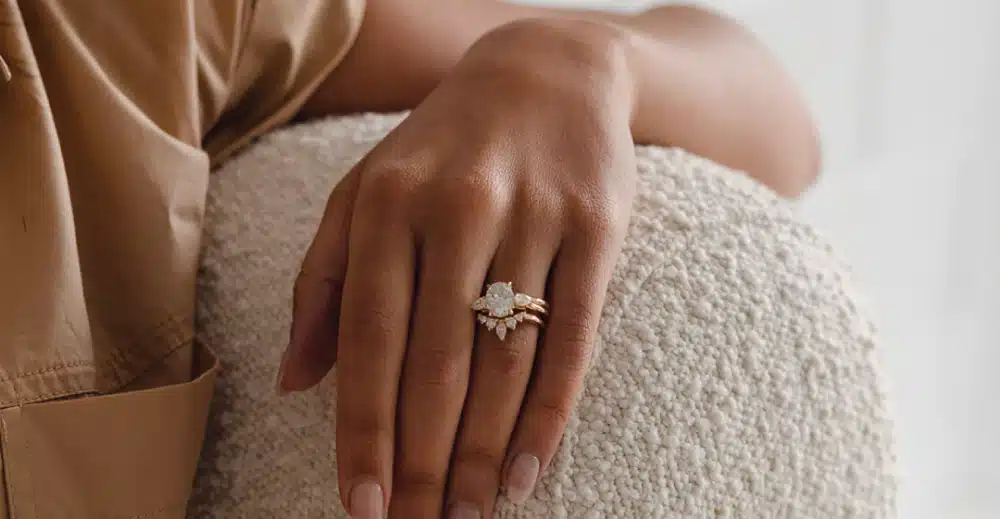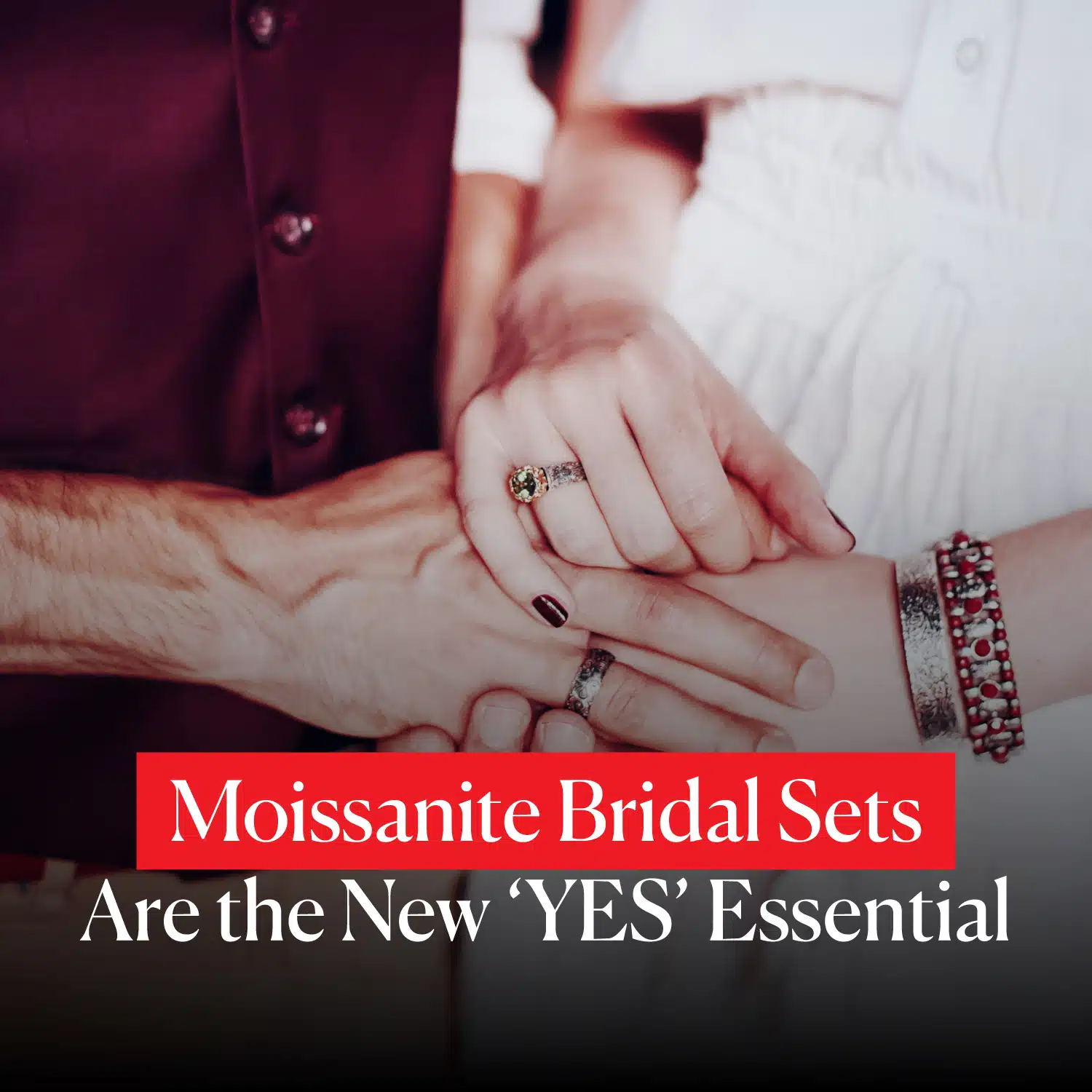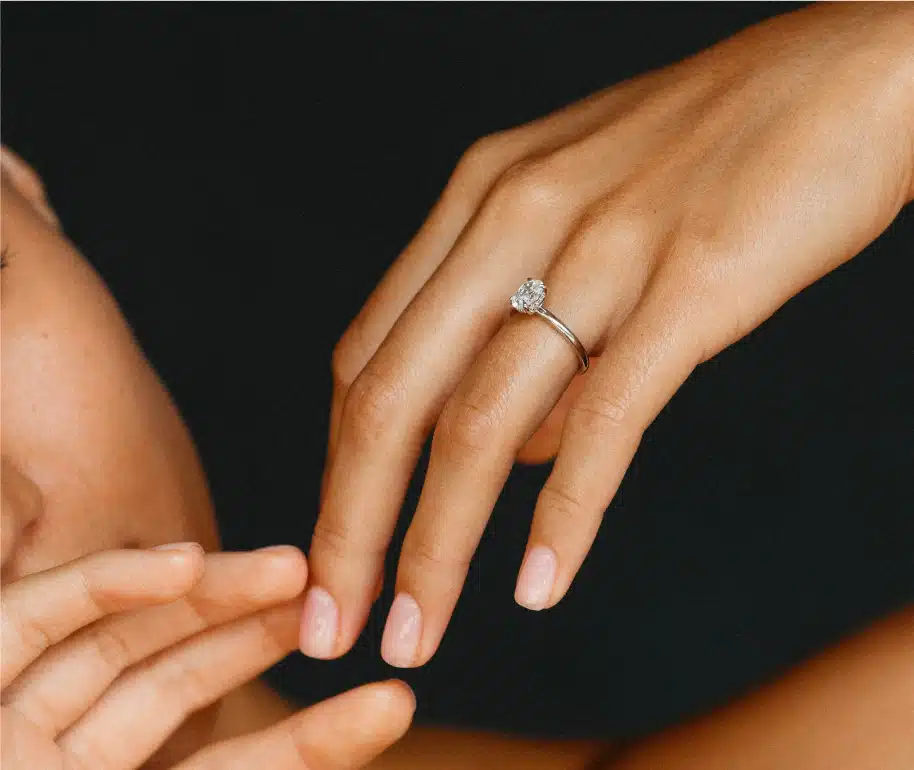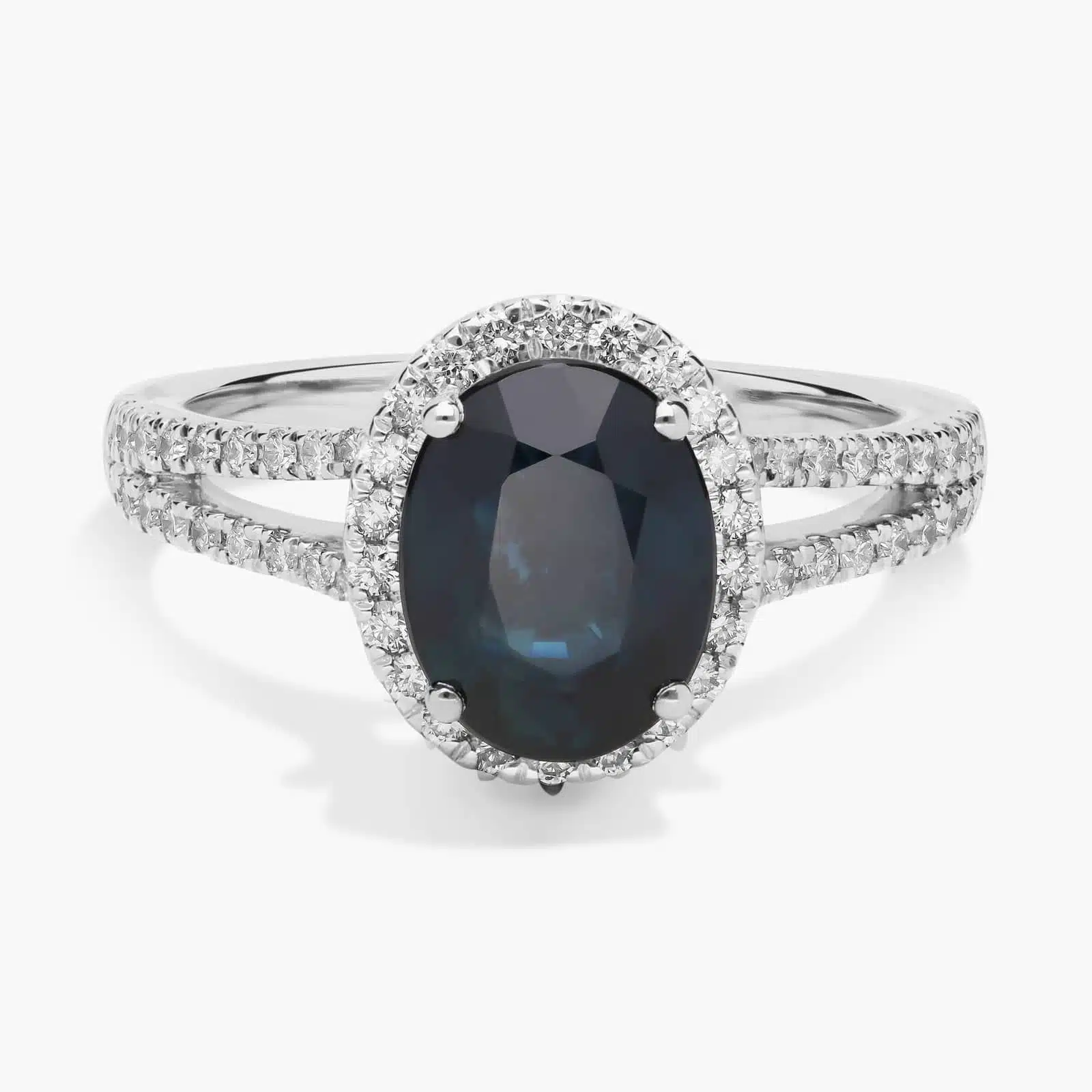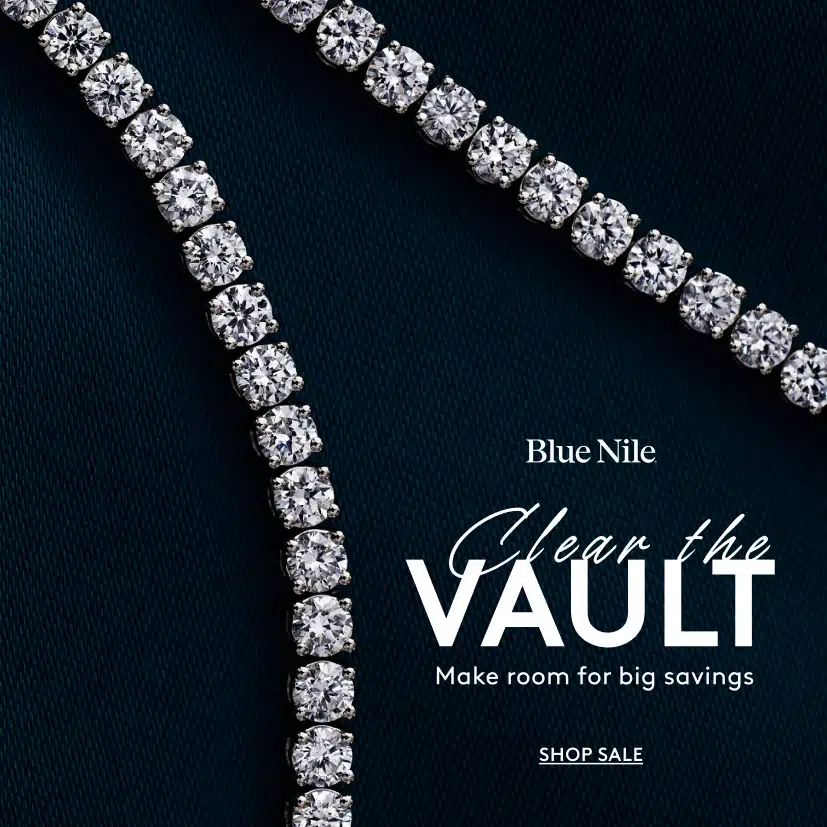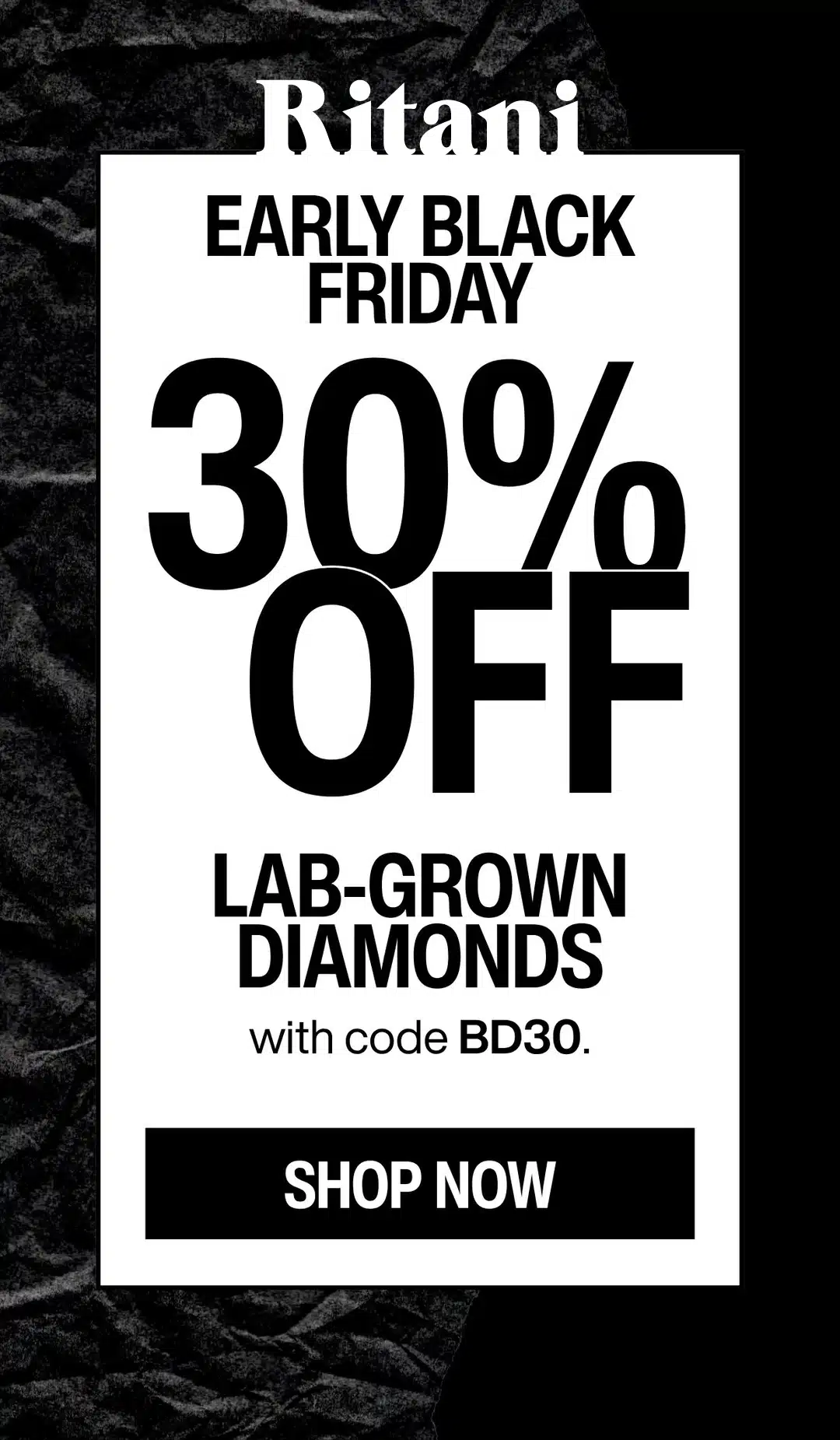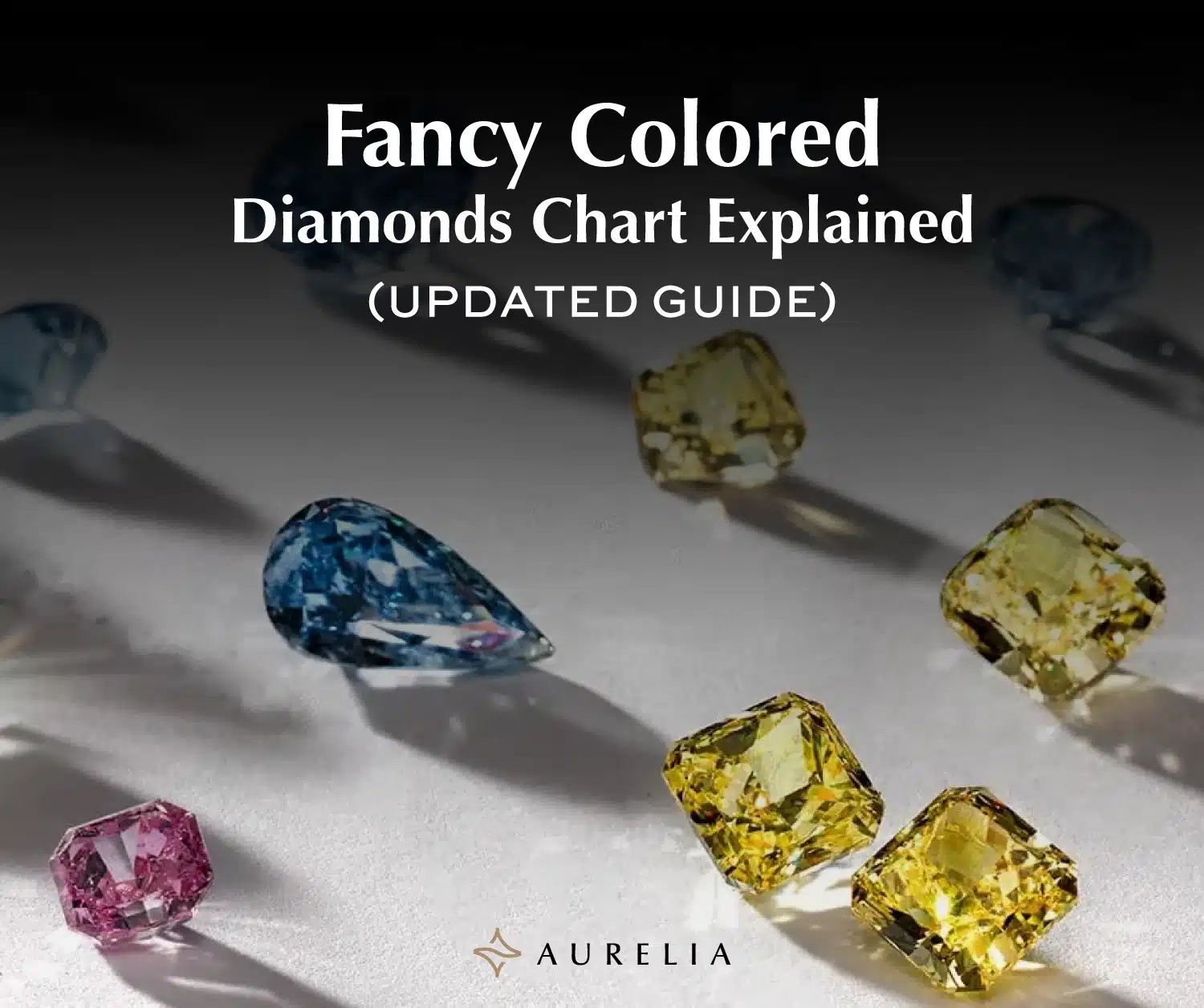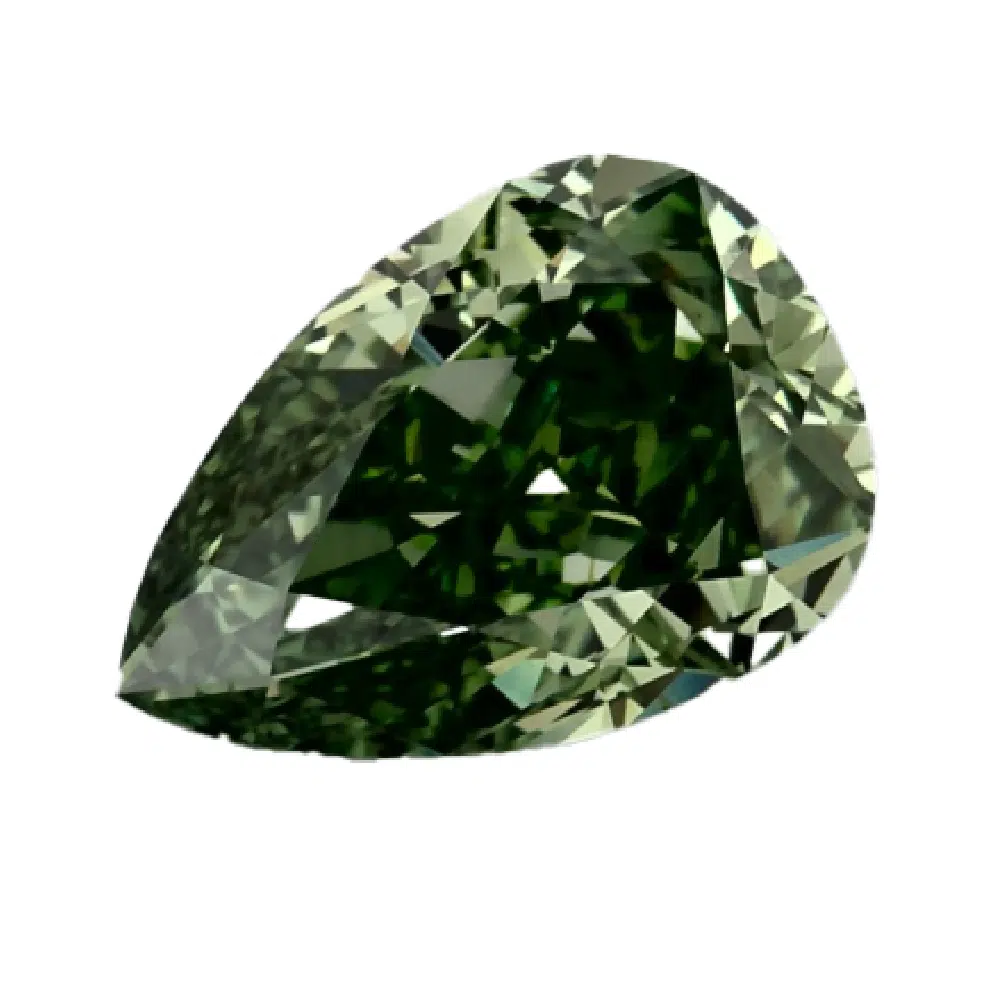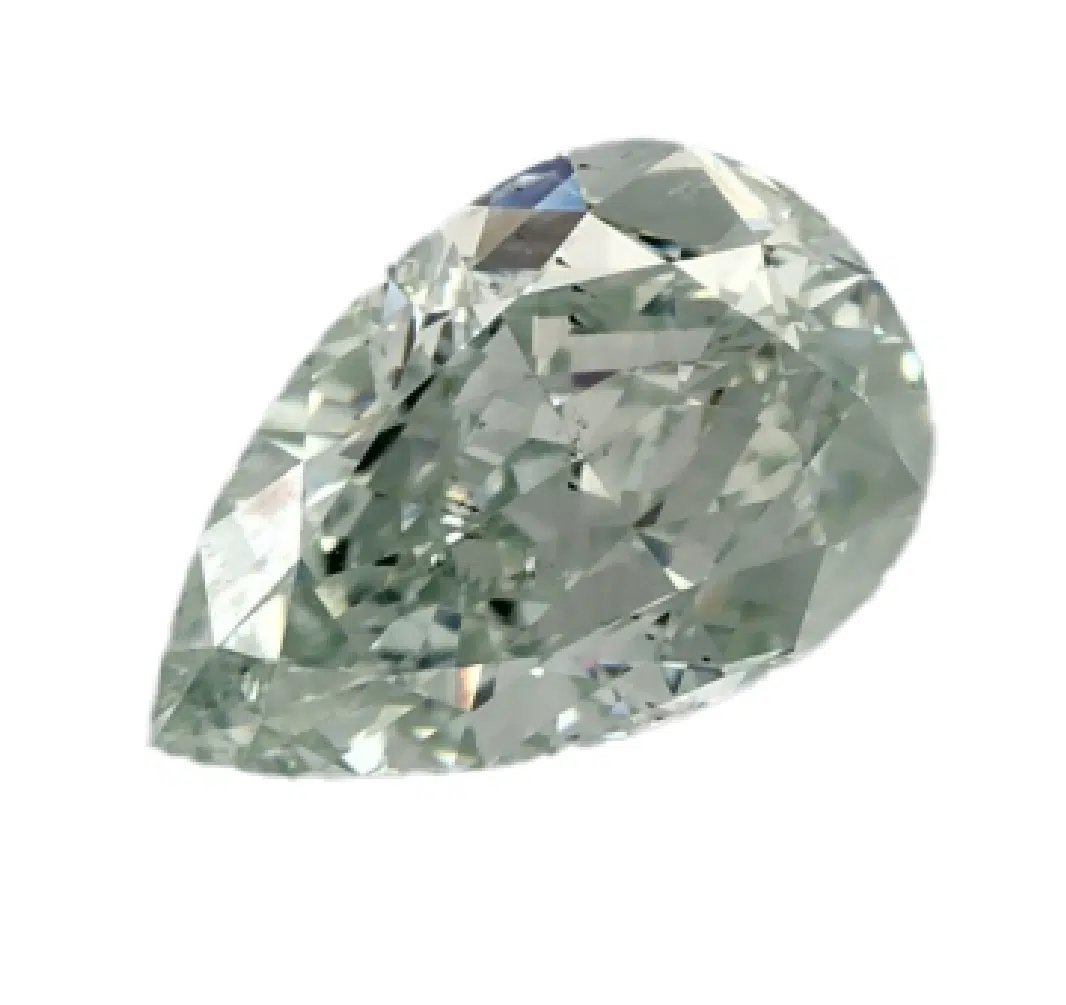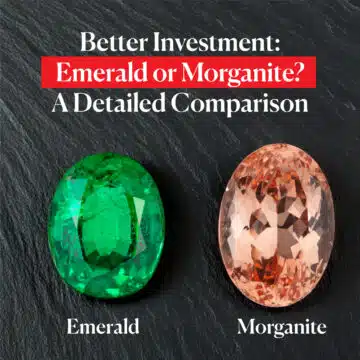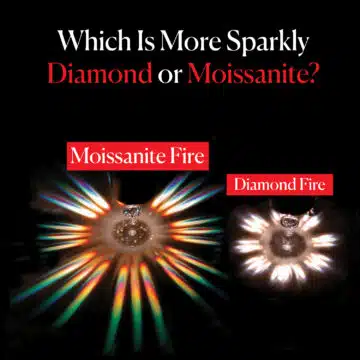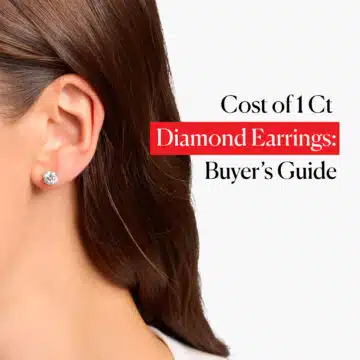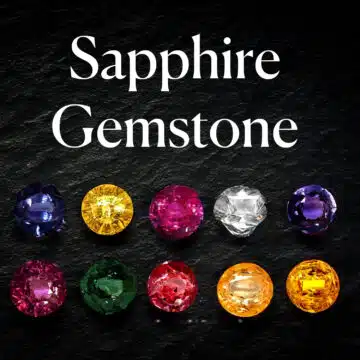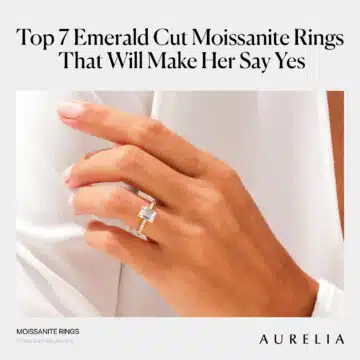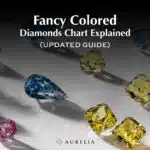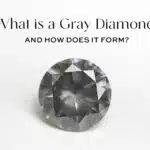A fancy colored diamond is a natural diamond that has a noticeable body color other than light yellow or brown, with its color being the primary driver of its value. The GIA fancy colored diamonds chart organizes these colors by their hue, tone, and saturation.
But that’s the textbook definition. Let me tell you the real story.
In the world of diamonds, for centuries, ‘perfect’ meant the complete absence of color. But what if I told you that the rarest, most valuable, and most fascinating diamonds in the world are the ones that are perfectly imperfect? The ones nature made a ‘mistake’ on? Welcome to the incredible world of fancy colored diamonds—nature’s beautiful, billion-dollar mistakes.
Deal Alert: Black Friday! Get up to 40% OFF fine jewelry at Blue Nile !
One In A Lifetime Sale: “Clear The Vault” – Get up to 70% OFF on select jewelry at Blue Nile !
Exclusive Offer: Lock in a gorgeous ring! Get up to 20% OFF engagement ring settings at James Allen .
That is exactly why I’ve created this guide. As your expert in the business, I’m going to help you crack the code of these enigmatic gems. My promise to you is that by the end of this, you will be an expert, too. We will break down the official GIA chart piece by piece.
We will take a journey through every single color on the spectrum, from the impossible Red Diamond to the chic and mysterious Gray Diamond. And I will give you the unfiltered truth about the modern market reality so you can buy with total confidence.
Let’s begin.
The Ultimate Fancy Diamond Test: Rarity vs. Value?
One of these green diamonds is a 1.01 carat Natural diamond, and the other is a 2.04 carat Lab-Grown diamond. One is priced at $133,060 and the other is priced at $1,110. Choose the diamond you think looks better and click ‘Select’ to reveal its identity, specifications, and true price.
What is a Fancy Color Diamond? A GIA Expert’s Primer
Before we dive into the incredible rainbow of colors, you and I need to be on the same page. The most important thing to understand is that the diamond world has two completely separate rulebooks for color.
The rules for a classic “white” diamond are the exact opposite of the rules for a fancy colored diamond.
The D-to-Z Scale vs. The World of “Fancy”
For most of its history, the diamond industry was obsessed with the absence of color. The GIA created the famous D-to-Z color scale where ‘D’ is a perfect, icy, colorless stone, and as you go down the alphabet to ‘Z’, the diamond has an increasingly noticeable yellowish or brownish tint.
In this world, color is a flaw, and a ‘Z’ color diamond is considered the least desirable.
But what happens when you go past Z? What happens when a diamond has so much color that it’s no longer just a “tint” but a beautiful, defining feature? That is where you cross the threshold into the incredible world of fancy diamonds.
As I always tell my clients, a yellow tint in a white diamond is a flaw, but a powerful yellow color is a feature. It’s all about strength. As the GIA themselves put it:
“Diamonds in the D-to-Z range usually decrease in value as the color becomes more obvious. Just the opposite happens with fancy color diamonds: Their value generally increases with the strength and purity of the color.”
For a fancy diamond, color is not a flaw—it is the entire point. Understanding this fundamental difference is the first step, a concept we explore in our comprehensive Diamond Color and Clarity Chart Guide.
The Secret Language: Hue, Tone, & Saturation
So, how do experts actually describe these incredible colors? At the GIA, it’s not just a guess; it’s a science based on three distinct pillars. If you want to understand the chart, you first need to learn this secret language.
- Hue (The Actual Color):
This is the easiest one. It’s the diamond’s dominant, face-up color. Is it blue? Is it green? Is it yellow? It is the actual color you see on the rainbow. - Tone (The Lightness or Darkness):
This is about how light or dark that hue is. Think of it like a photograph. You can take the exact same shade of blue and either make it a bright, airy sky blue (a lighter tone) or a deep, moody navy blue (a darker tone). Tone is the depth of the color. - Saturation (The Strength or Intensity):
This is the most important—and most valuable—of the three. Saturation is the strength or purity of the color. Here’s my favorite analogy: imagine you’re a painter.
- If you take a lot of water and just a tiny bit of red paint, you get a weak, washed-out pink. That’s low saturation.
- If you take a lot of red paint and just a tiny bit of water, you get a powerful, vibrant, screaming red. That’s high saturation.
- If you take a lot of water and just a tiny bit of red paint, you get a weak, washed-out pink. That’s low saturation.
It is the interplay of these three factors—Hue, Tone, and Saturation—that gives a diamond its unique personality and its official GIA grade. This is the bedrock of all diamond evaluation, a system we explore in our ultimate guide to the Diamond Grading Chart (The 4 Cs).
The Fancy Colored Diamonds Chart Explained: A Visual Journey
Now that you know the secret language—Hue, Tone, and Saturation—let’s look at the master key that unlocks it all. The following images are our custom-rendered versions based on the GIA’s official fancy color diamond charts and reference guides.
They are the road map to understanding how every single colored diamond in the world is graded and valued. I’m going to give you a guided tour, and by the end, you’ll be able to read these charts like a pro.

The Master Key: Cracking the Code of the Full Hue Circle
Alright, let’s get visual. What you are looking at is the foundation of everything. This is the GIA’s official hue circle, and it shows all 27 of the primary hues they use to describe colored diamonds. Think of it as the ultimate color wheel for the rarest gems on Earth.
Let’s break down what this chart is really telling you:
It’s a Spectrum, Not a Set of Boxes
Notice how the colors flow seamlessly into one another? A “Red” diamond can have a “Purplish” or an “Orangey” neighbor. This is critical. The GIA report will tell you the stone’s precise location on this circle. An “Orangey Red” is not a “Red.”
This nuance can mean a difference of hundreds of thousands of dollars, a key factor in any diamond’s value, which we cover in our Definition of an Appraisal guide.
Saturation Isn’t Equal for All Colors
Here’s an expert secret hidden in plain sight. Notice how the yellow diamond on the chart looks brighter and lighter than the deep blue or violet diamonds? As the GIA’s own text confirms, “Colors reach their strongest saturation at different tones.”
Yellows are naturally lighter; blues are naturally darker. This is why you should never compare the “brightness” of a yellow to a blue—you’re comparing two completely different personalities. It’s a key part of appreciating a stone’s unique character, a lesson that’s vital when shopping for any diamond, as I explain in my Diamond Buying Guide.

The World of Light Tones: The Art of the Pastel
Now let’s look at what happens when a diamond has a lighter tone. This is the world of soft, romantic, pastel colors—the realm of Light and Fancy Light grades.
What this chart masterfully illustrates is that as a diamond gets lighter, its ability to hold strong, distinct color decreases. As the GIA’s own research states,
Colors do not reach high levels of saturation at lighter tones; nor does the eye discern as many colors at these locations in color space.
Mehedi’s Take: “This is the scientific reason behind some famous diamond names. Notice how ‘Red’ isn’t on this light-tone chart? Instead, you see ‘Pink.’ A ‘light red’ doesn’t exist; it’s called a Pink Diamond! This chart proves that gemological language is incredibly precise. You’re not just buying a color; you’re buying a specific location in this 3D color space.”
This is why fewer, broader color terms are used for these delicate stones. You are in the world of baby blues, soft lemon yellows, and gentle mint greens.
The World of Dark Tones: The “Modifier” is Everything
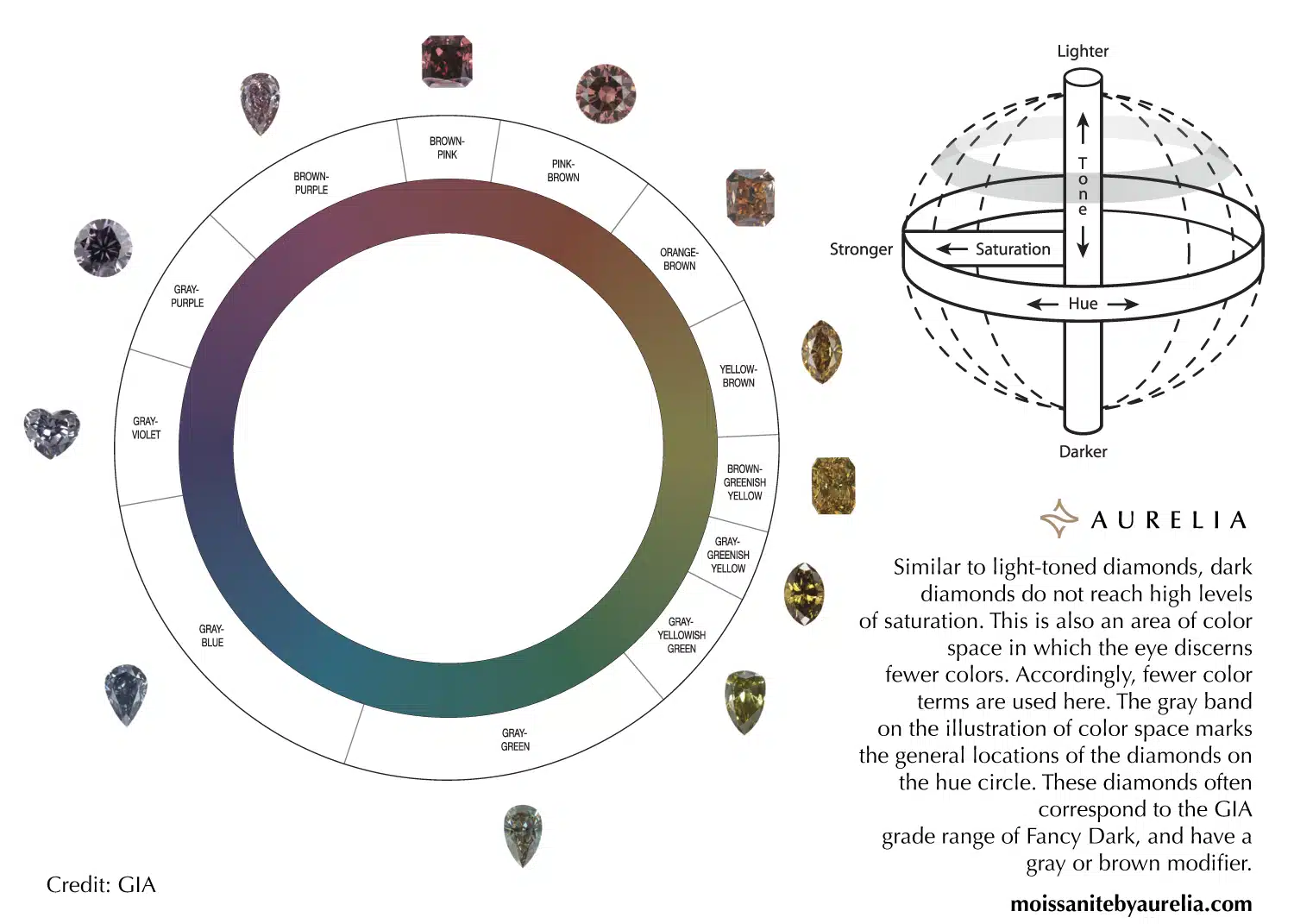
Finally, we come to the world of deep, moody, and complex colors. This chart illustrates the tones that correspond to the Fancy Dark grade, and it reveals one of the most important value secrets in the entire industry.
As the GIA text explains,
Dark diamonds do not reach high levels of saturation.
Their color is deep, but not necessarily pure or vibrant. It’s in this zone that the critical modifier words become the most important part of the diamond’s description.
The “Brownish” Modifier
For warm colors like pink, yellow, and orange, as they get darker and less saturated, they take on a brownish appearance. A “Fancy Dark Brownish Pink” is a beautiful, romantic stone, but it is valued completely differently than a pure pink. This is the heart of the beautiful and accessible world of the Brown Diamond.
The “Grayish” Modifier
For cool colors like blue, green, and violet, as they darken, they take on a grayish cast. A “Fancy Dark Grayish Blue” is that stunning, stormy-ocean color that is the signature of the legendary Hope Diamond. It’s the core of what makes the Gray Diamond so sophisticated.
Understanding this chart is your key to unlocking the true meaning of a GIA report and becoming a genuinely smart and confident buyer. This is a level of detail that even many jewelers don’t grasp, and it’s what separates a good choice from a truly great one.
A Gallery of Wonders: The A-Z Guide to Every Fancy Color
Now that you can speak the language, let’s take a journey through nature’s art gallery. For each color, we’ll look at a dedicated chart that shows its unique journey from a hint of color to a fully saturated masterpiece.
This is your expert, visual guide to every fancy color, starting with the one that captures pure joy: the yellow diamond.
The Yellow Diamond: A Drop of Pure Sunshine
When we enter the gallery of yellow diamonds, we are walking into a room filled with pure joy. This is the color of sunshine, of celebration, of optimism. But not all sunshine is the same. There’s the bright, warm gold of a high summer afternoon, and then there’s the cool, earthy glow of a late autumn harvest. A true connoisseur knows the difference, and now, you will too.
The “Warm” Yellows: The Heart of the Canary

First, let’s look at the color everyone dreams of. This chart perfectly illustrates the “warmer” side of the yellow hue range. These are the stones that lean toward that beautiful, fiery yellow/orangey yellow boundary.
Visual Lesson (Mehedi’s Take): “This is a perfect lesson in the journey of saturation. On the left, you see an array of real yellow diamonds, and on the right, the GIA scale that gives them their name.
It illustrates the journey from a simple D-Z ‘Light Yellow’ at the top, down through ‘Fancy’ and into the powerful, electric colors of ‘Fancy Intense’ and ‘Fancy Vivid’ at the bottom. This is the ‘Canary’ you’ve heard about—pure, undiluted sunshine captured in a gem.”
The “Cooler” Yellows: The Earthy, Sophisticated Side
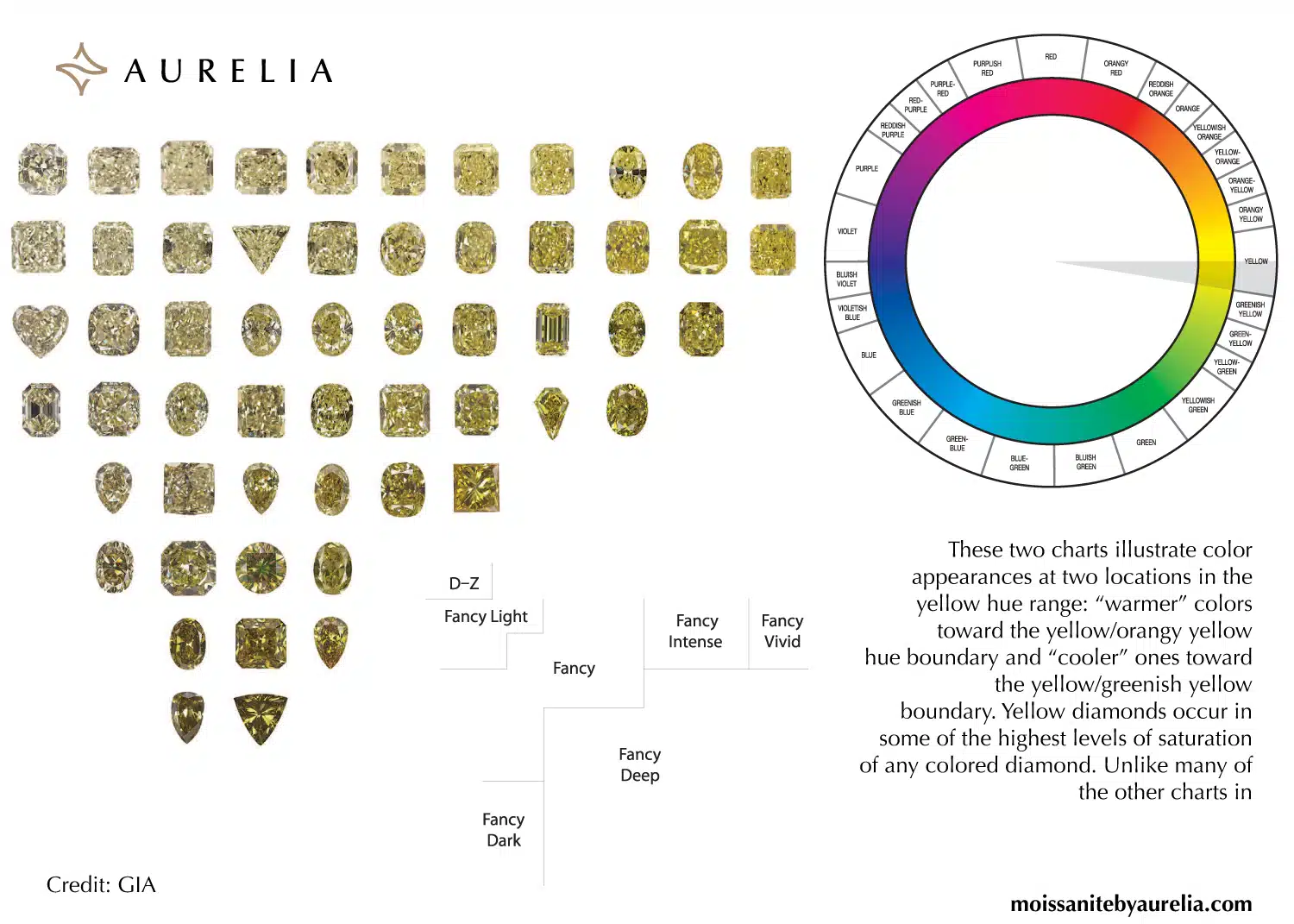
But here is the secret that separates a true expert from a casual buyer: yellow diamonds have another, more mysterious side. This chart illustrates the “cooler” tones that lean toward the yellow/greenish yellow boundary.
Visual Lesson (Mehedi’s Take): “This is the sophisticated, earthy side of yellow. The diamonds here have a different personality—more of an olive, khaki, or ‘absinthe’ green tint. Pay close attention to the bottom of the grid and the shaded area on the chart.
As GIA’s text notes, these indicate areas where the color is described as ‘predominantly brown.’ This chart brilliantly shows the seamless transition from a ‘Fancy Dark’ greenish-yellow into the world of the Brown Diamond. It’s a visual masterclass in how connected these incredible fancy colors are.”
Mehedi’s Expert Summary & GIA Insights
- What It Is: A real, natural diamond that gets its beautiful sunny color from nitrogen atoms trapped in its crystal structure during its formation.
- Key Fact: While yellow diamonds are the most common of all the rare fancy colors, the top-tier “Canary” grades (Fancy Intense and Fancy Vivid) are exceptionally rare, valuable, and are considered strong investment assets.
Now for some insider knowledge, direct from the GIA’s own documents. This is what you need to know to buy like a pro.
As the Gemological Institute of America (GIA) themselves state,
Yellow is diamond’s second most common fancy color. Yellow diamonds are sometimes marketed as ‘canary.’ While this isn’t a proper grading term, it’s commonly used in the trade…
My Expert Knowledge: The GIA also reveals a secret of the diamond cutters. They note that expert cutters will specifically choose fancy shapes, like the Radiant Cut, because its facet pattern is a master at intensifying and improving the face-up color of a yellow diamond.
The very shape is a tool to make the color richer! This is a completely different philosophy than cutting for a colorless stone, which is all about maximizing sparkle—a topic we explore in our guide to What Are the Best Diamond Certifications?.
The Final Word
This is just the highlights reel of this incredible and diverse gem. To get the full, deep-dive story on real-world pricing, the celebrity rings that made them famous, and a complete breakdown of “warm” vs. “cool” tones, you have to read my ultimate guide.
The Orange Diamond: Nature’s Fire Gem
Next in our gallery, we come to a color of pure fire and energy. The orange diamond is one of the most vibrant and captivating of all fancy colors. But its story is a fascinating battle for purity, as it lives on the color wheel right between the sunny world of yellow and the earthy realm of brown. These charts will show you that journey.
The Journey of Saturation: A Yellow-Orange Case Study
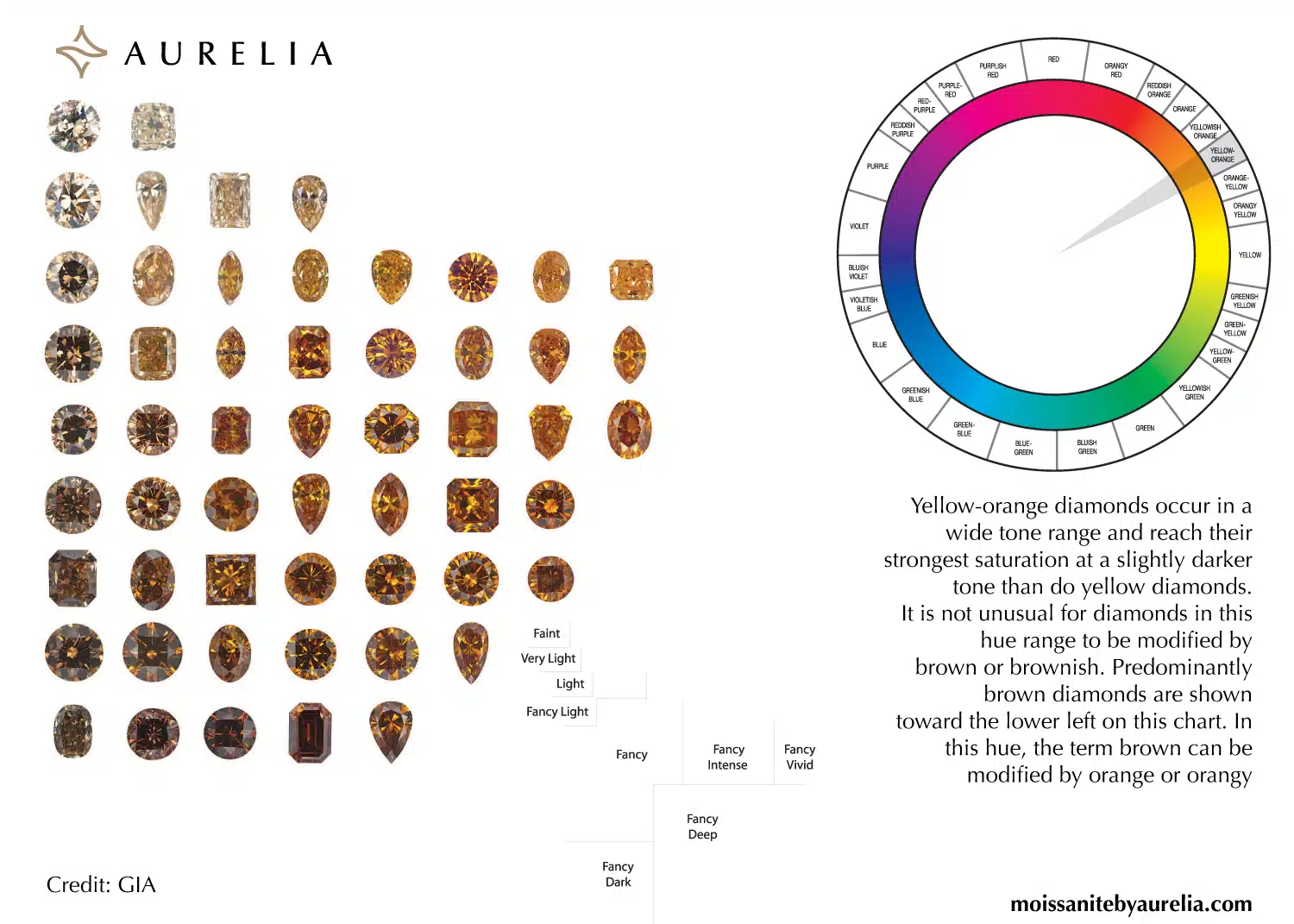
Our first chart is a masterclass in saturation and tone. On the left, you see a grid of real yellow-orange diamonds. Notice how, as the GIA’s text explains, these stones ‘reach their strongest saturation at a slightly darker tone than do yellow diamonds.’
The color isn’t a bright, light-filled yellow; it’s a deeper, more intense fire. But look closely at the grid: you can see that as the stones travel down through the ‘Fancy’ and ‘Fancy Deep’ grades, many begin to pick up those beautiful, but distinct, brownish hues. This is the constant battle an orange diamond faces.
The Bridge to Brown: An Orange-Yellow Case Study
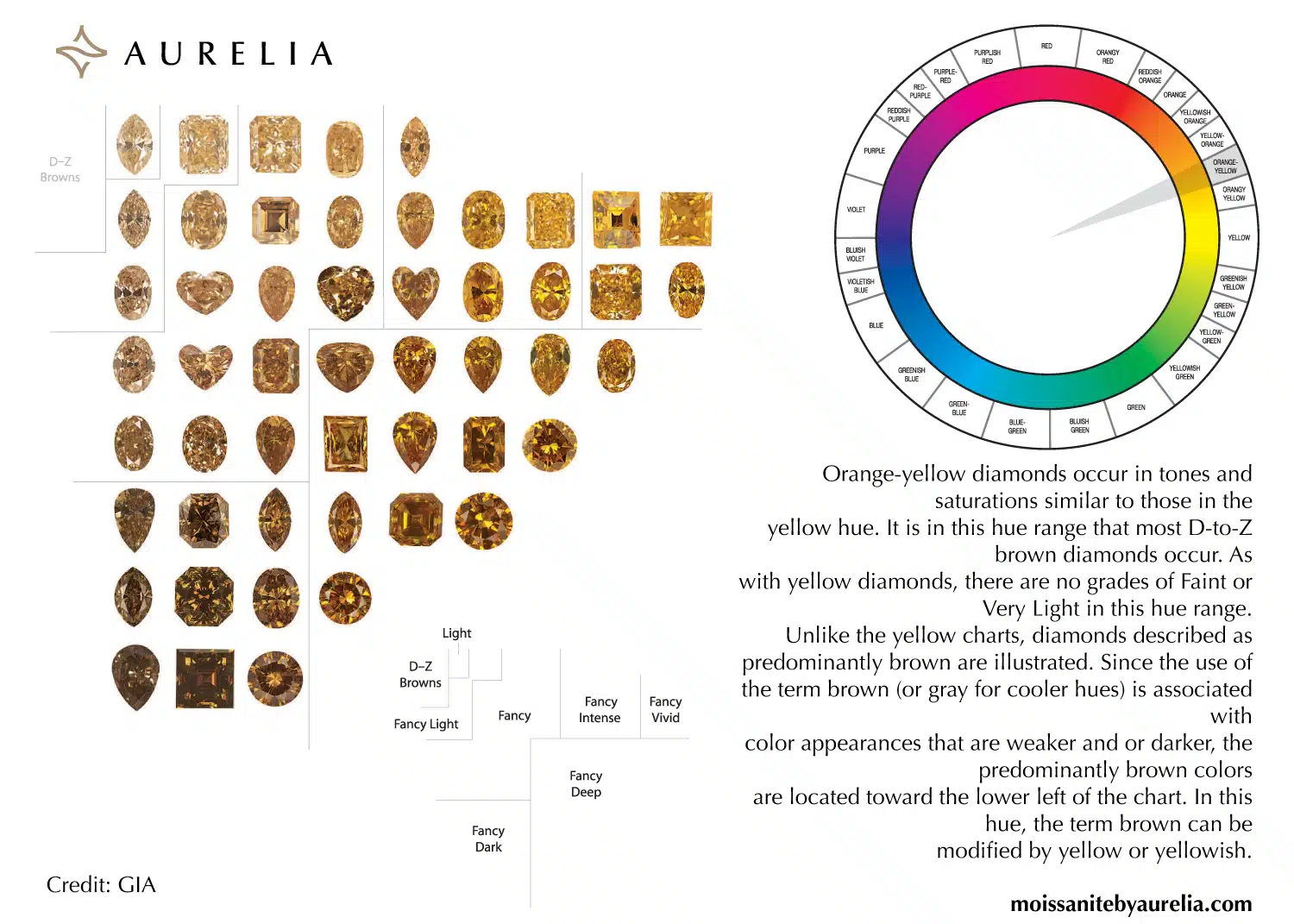
This second chart tells the other half of the story. It brilliantly shows the direct connection between orange-yellow and brown. Look at the top of the grid: those diamonds are classified on the ‘D-Z’ scale as Browns.
But as they gain more saturation and strength, they cross the threshold into ‘Fancy Light’ and ‘Fancy.’ This chart visually proves what the GIA text confirms: in this hue range, the ‘weaker and or darker’ colors are not just like brown, they ‘are described as predominantly brown.’
This is why finding a pure, unmodified orange is the ultimate treasure.
Mehedi’s Expert Summary:
- What It Is: An extremely rare diamond whose color is the result of a “two-part miracle”: a “hyper-specific” arrangement of nitrogen atoms combined with the immense geological pressure of plastic deformation.
- Key Fact: A pure, unmodified Fancy Vivid Orange diamond is one of the rarest gems on Earth, rarer than most pinks and blues. Its nickname in the trade is a “Pumpkin Diamond.”
GIA Insider Insights
As the GIA states, the rarity of a pure orange cannot be overstated.
Natural yellow gem diamonds are the most common of the fancy-color diamonds, while orange diamonds are among the rarest when they have unmodified hues.
My Expert Knowledge: The line between a “Fancy Deep Orangey Brown” and a “Fancy Brownish Orange” is incredibly fine, but it can represent a massive difference in price. This is where you have to trust the experts. It’s not something you can just eyeball.
This is why a top-tier lab report from GIA is non-negotiable, a lesson I stress in my deep dive, What Does GIA Certified Mean?. It’s the only way to know for sure which side of that million-dollar line your diamond falls on.
The Final Word
The orange diamond is a story of fire, rarity, and a beautiful battle between pure color and its earthy neighbors. To learn about the legendary stones, the world-record prices, and how to buy one of these fiery gems, you have to read my complete guide.
Read My Ultimate A-Z Guide to the Natural Orange Diamond Here.
The Red Diamond: The Undisputed King of Rarity
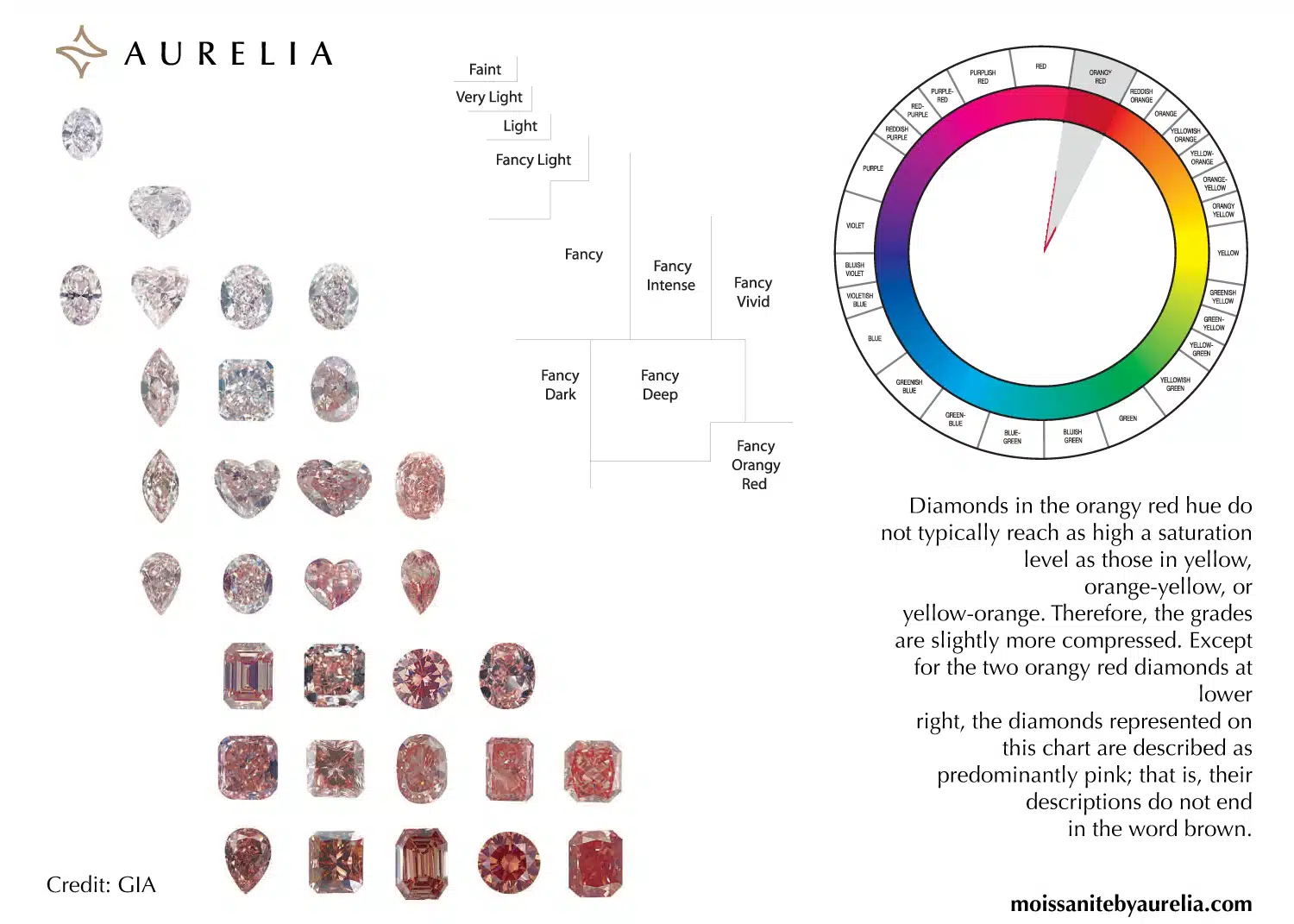
The Journey of Saturation: The Orangey-Red Case Study
Visual Lesson (Mehedi’s Take): “This chart is a masterclass in rarity. It shows us what happens at the fiery boundary between red and orange. As you can see, the journey begins in the world of pink, traveling down through the GIA scale from ‘Faint’ to ‘Fancy Intense.’
But look at the GIA’s own words. They tell us that diamonds in this ‘orangy red hue’ have a very hard time reaching high saturation levels, so the grades are ‘compressed.’ Most of the beautiful stones you see on this chart are still officially described as ‘predominantly pink.’
It’s only the two magnificent examples at the very bottom right that have made the final, almost impossible leap to be crowned ‘Fancy Orangy Red.’ This chart doesn’t just show you what an orangey-red diamond is; it proves why a true red is a geological miracle.”
Mehedi’s Expert Summary:
- What It Is: The rarest gemstone on Earth. Its color comes not from impurities but from a violent, extreme distortion in its crystal lattice called plastic deformation.
- Key Fact: The supply of natural red diamonds is now finite. Fewer than 30 true gem-quality examples are confirmed to exist, and their primary source, the legendary Argyle Mine, is now closed forever.
GIA Insider Insights
As the Gemological Institute of America’s own research from this chart confirms,
Diamonds in the orangy red hue do not typically reach as high a saturation level as those in yellow, orange-yellow, or yellow-orange.”
My Expert Knowledge: This scientific observation is the bedrock of a red diamond’s value. It is nature’s own admission that creating a true, saturated red is its most difficult task. The GIA grading system for red is unique: there is only one intensity level, “Fancy Red.”
A stone is either saturated enough to be called red, or it isn’t. This ultimate standard is why a trustworthy certificate is non-negotiable, a lesson I cover in my guide, What Are the Best Diamond Certifications?.
The Final Word
The story of the red diamond is one of impossible odds, breathtaking value, and now, finite supply. It is the undisputed king of all gems. To explore its famous legends, see the mind-boggling real-world prices, and understand why it’s a true investment-grade asset, you have to read my ultimate guide.
The Pink Diamond: A Legend of Romance & Investment

The Journey of Saturation: A Pink Diamond Case Study
Visual Lesson (Mehedi’s Take): “Now this is the heart of the pink diamond world. This incredible chart shows the entire, breathtaking journey of a pink stone. It starts at the top with a pale, almost imperceptible ‘Faint’ or ‘Light’ pink—a whisper of color.
But as you travel down the grid through ‘Fancy’ and into the powerful ‘Fancy Intense’ and ‘Fancy Vivid’ grades, that whisper becomes a song. You can see the colors deepen, from a soft rose to a vibrant magenta, including some stunning purplish-pinks.
And at the very bottom, you see the final destinations: the incredibly rare ‘Fancy Red,’ and the deep, moody ‘red-brown or reddish brown’ stones of the ‘Fancy Dark’ grade.”
Mehedi’s Expert Summary:
- What It Is: An ultra-rare and highly coveted diamond whose romantic color is caused by plastic deformation—the same rare lattice distortion that creates a red diamond.
- Key Fact: The 2020 closure of the Argyle mine in Australia, the world’s primary source for high-quality pink diamonds, has turned these gems into finite, heirloom assets with a proven track record of significant investment appreciation.
GIA Insider Insights
From their official documents, the GIA provides a key insight for buyers:
Pure pinks are more popular than diamonds that are purplish, orangy, brownish, or grayish.
My Expert Knowledge: While pure pinks are the most popular, the most valuable and sought-after secondary hue is “Purplish-Pink.” That hint of purple adds a layer of royal sophistication and is a signature of many of the finest stones from the Argyle mine.
On the other end, as this chart shows, the darkest stones that are “red-brown or reddish brown” have a completely different personality, a lesson in how secondary hues create a stone’s character, something we also see in the beautiful world of the Brown Diamond.
The Final Word
The pink diamond is a legend of romance, rarity, and real value. To explore its two incredible price realities, learn about its most famous examples, and get a complete buying guide, you must read my definitive A-Z resource.
The Purple Diamond: A Royal Enigma
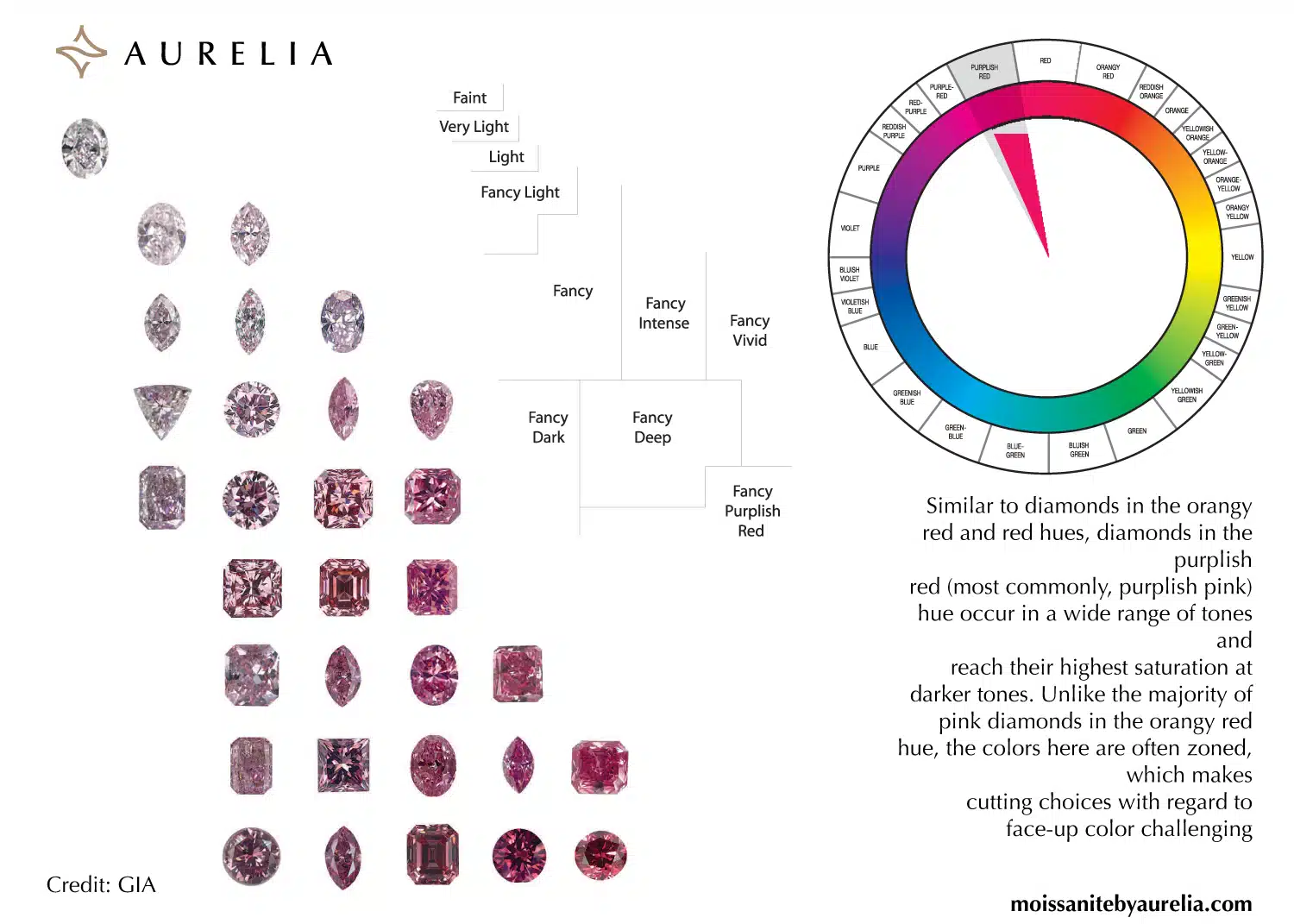
The Journey of Saturation: A Purplish-Red Case Study
Visual Lesson (Mehedi’s Take): “This chart is a masterclass in complexity and royal color. Look at the incredible journey. It starts at the top with a pale, almost silvery-lavender stone in the ‘Faint’ and ‘Light’ grades.
But as we travel down the GIA scale, the color absolutely explodes. It moves through a beautiful ‘Fancy’ pink with a hint of purple, and then deepens into the powerful, magenta and fuchsia tones of ‘Fancy Intense,’ ‘Fancy Vivid,’ and ultimately, the incredibly rare ‘Fancy Purplish Red’ at the very bottom.”
Now, here is a secret from the GIA’s own research on the chart that every expert knows: “diamonds in the purplish red… hue… reach their highest saturation at darker tones.” Unlike a bright yellow, a purple-pink needs depth and a darker tone to truly come alive.
H4: Mehedi’s Expert Summary:
- What It Is: An extremely rare diamond whose color is the result of plastic deformation, but with unique internal graining that creates the purple or violet hue. It is a scientific cousin to the legendary Red Diamond.
- Key Fact: The “Purplish” modifier, especially in a pink diamond, is incredibly desirable and was a hallmark of the finest stones from the now-closed Argyle Mine, often adding a significant premium to the price.
GIA Insider Insights
As the Gemological Institute of America itself notes on this very chart, the colors here are often
zoned, which makes cutting choices with regard to face-up color challenging.
My Expert Knowledge: “Zoning” means the purple and pink colors aren’t perfectly even throughout the rough crystal. This is what makes cutting these stones a true art form.
The cutter has to study the rough for weeks, planning every facet to hide the weaker color zones and amplify the rich purplish-pink hue in the final, face-up view. It’s an incredible challenge that requires a master’s hand, a level of skill we explore in our guide to the Diamond Cut Chart.
The Final Word
The purple diamond and its close relatives are a story of royalty, rarity, and breathtaking beauty. To learn about its incredible modern uses, see the real-world prices, and get a complete buying guide, you have to read my ultimate resource.
The Green Diamond: A Gem “Kissed” by the Earth
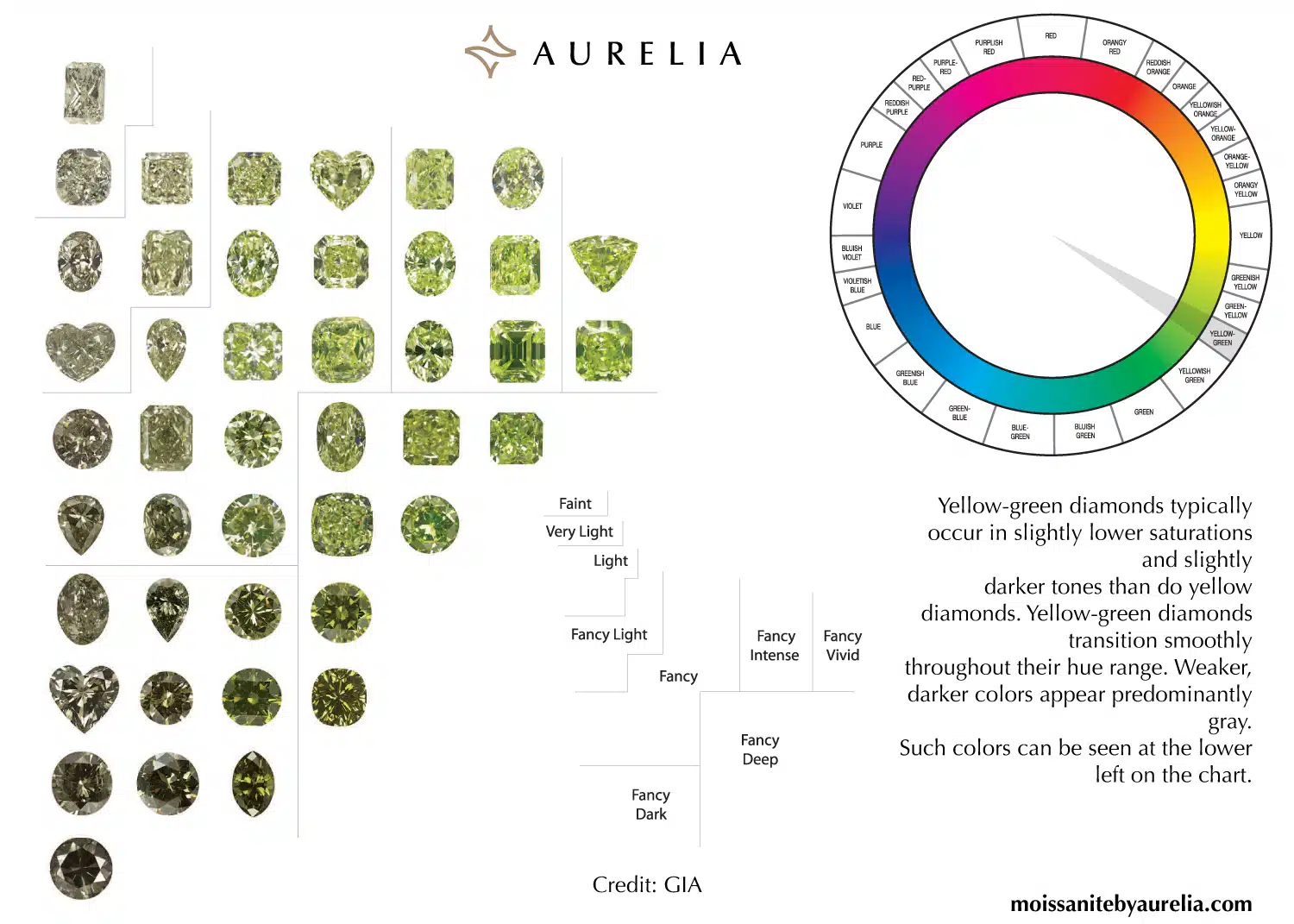
The Journey of Saturation: A Yellow-Green Case Study
Visual Lesson (Mehedi’s Take): “Now we enter the world of one of nature’s greatest mysteries: the green diamond. This chart is a perfect lesson in its unique, earthy personality. Look at the grid. Unlike the bright, sunny yellows, the GIA text tells us that ‘Yellow-green diamonds typically occur in slightly lower saturations and slightly darker tones.’
You can see this with your own eyes. The journey starts with a pale, almost grayish tone and deepens into a rich, beautiful ‘Fancy’ olive green. It’s a quieter, more sophisticated color.”
Here’s an expert secret hidden in the GIA’s own notes on the chart: “Weaker, darker colors appear predominantly gray.” This is critical. A green diamond at its lowest saturation isn’t just a faint green; it often presents as a cool, earthy Gray Diamond, proving how interconnected these beautiful, moody colors truly are.
Mehedi’s Expert Summary:
- What It Is: An exceptionally rare diamond that gets its color from a “kiss” of natural radiation inside the Earth. Its color is often just a thin “skin” on the surface of the rough diamond.
- Key Fact: A pure, unmodified green diamond is the second rarest of all, trailing only the mythical Red Diamond. A GIA report confirming “Natural Color Origin” is absolutely non-negotiable.
GIA Insider Insights
As the Gemological Institute of America confirms,
Fancy green diamonds are typically light in tone and low in saturation. Their color often appears muted, with a grayish or brownish cast.
My Expert Knowledge: The fact that the green color is often just a surface-level phenomenon makes cutting these gems a nerve-wracking art. A cutter must preserve a part of that original green “skin” (called a “Natural”) on the final stone to prove to gemologists its color is not artificial.
This is an incredible challenge, requiring a completely different philosophy than the one used to create a perfectly symmetrical, brilliant gem like we see in my guide to Hearts & Arrows Diamonds.
The Final Word
The story of the green diamond is one of patience, mystery, and a touch of radioactive magic. To learn about its most famous examples and see the real-world prices that prove its rarity, you have to read my complete guide.
The Blue Diamond: A Piece of a Lost Ocean
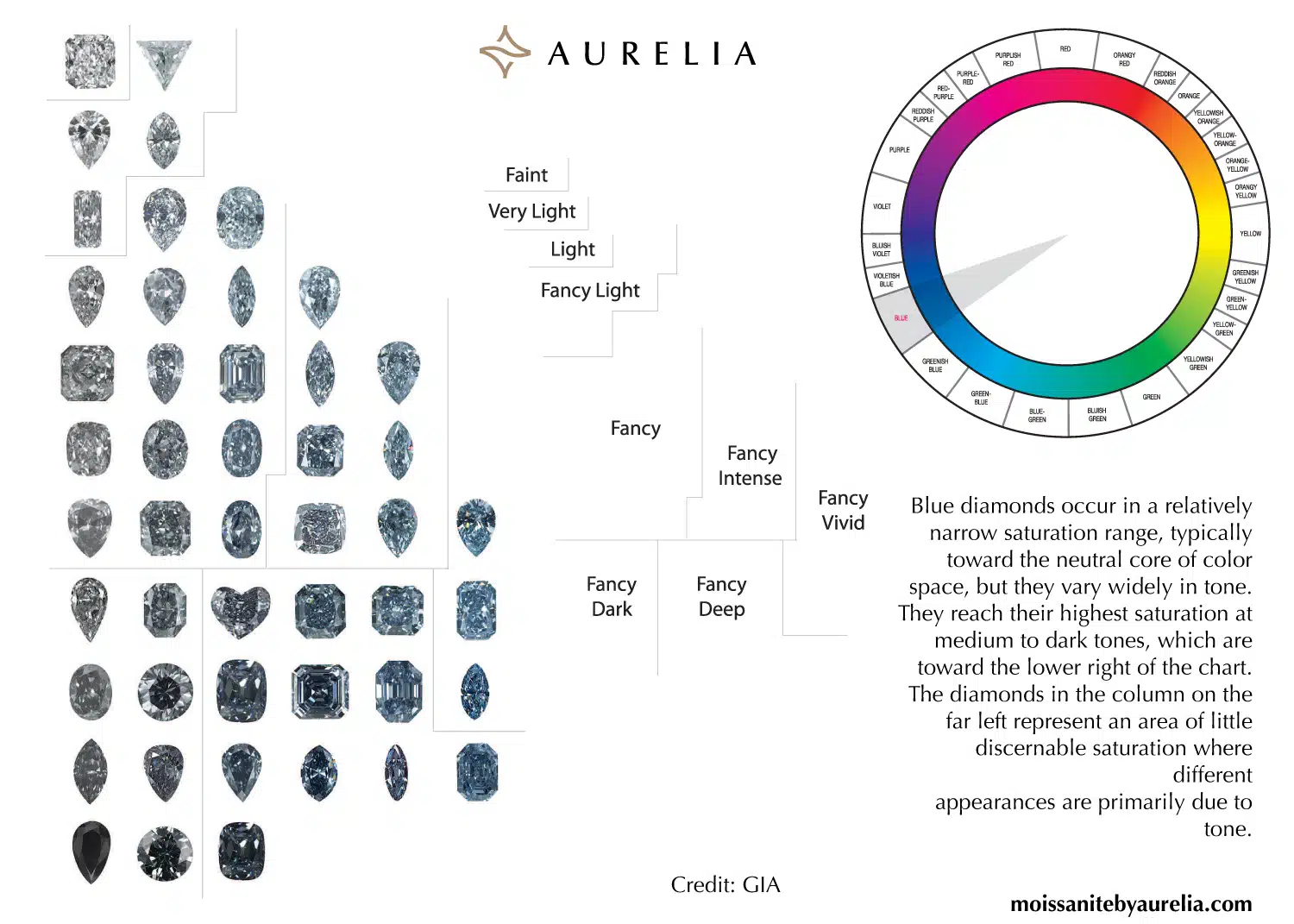
The Journey of Saturation: A Blue Diamond Case Study
Visual Lesson (Mehedi’s Take): “Now we dive into the color of royalty, the blue diamond. This chart perfectly illustrates its deep, soulful personality. The journey begins at the top with a pale, almost icy ‘Faint’ or ‘Very Light’ blue—a whisper of color.
But as we travel down the grid, the saturation builds, moving into the confident ‘Fancy’ and finally into the deep, bottomless ocean of ‘Fancy Deep’ and ‘Fancy Vivid’ at the bottom. This is where the magic happens.”
Look closely at the chart, and you’ll see the secret to a blue diamond’s beauty, straight from the GIA: “They reach their highest saturation at medium to dark tones.” A blue diamond needs depth and a darker tone to truly come alive. A light blue is pretty; a deep blue is hypnotic.
Notice that column on the far left? GIA notes that for these stones, “different appearances are primarily due to tone.” This is the scientific reason for the “Grayish-Blue” modifier. It’s where the saturation is so low that the stone’s natural gray tone becomes the star.
Mehedi’s Expert Summary:
- What It Is: A geological miracle colored by trace amounts of the element boron. That boron comes from ancient, recycled seawater, meaning a blue diamond is literally a piece of a lost ocean.
- Key Fact: A blue diamond is one of the rarest gems on Earth. The vast majority come from a single source, the Cullinan Mine in South Africa, creating an incredible supply bottleneck and immense value.
GIA Insider Insights
Here is the honest truth from the GIA themselves:
Blue diamonds are extremely rare. They generally have a slight hint of gray, so they’re rarely as highly saturated as blue sapphires.
My Expert Knowledge: This is a critical piece of information that every buyer needs to understand. Do not expect a blue diamond to look like a sapphire. You are not buying a simple color; you are buying the unique, icy, and incredibly brilliant sparkle of a diamond that just happens to be blue.
Its beauty is in its fire and life, not just its color. It’s a completely different personality from a Purple Diamond or a fiery Orange Diamond. The only way to be sure of a stone’s true, natural origin is with a top-tier lab report, a lesson central to my guide, What Are the Best Diamond Certifications?.
The Final Word
The blue diamond is a story of deep time, lost oceans, and incredible value. To learn about its world-record auction prices, its famous legends, and the unbelievable affordability of the modern lab-grown version, you must read my complete guide.
The Chameleon Diamond: Nature’s Magic Trick
There is no traditional saturation chart for a chameleon diamond, because its journey isn’t a straight line—it’s a magic trick. Imagine this: you start with a beautiful, moody ‘Fancy’ or ‘Fancy Dark’ olive-green diamond. That is its resting state.
The ‘journey’ happens in an instant. You warm the stone, and you visually see it travel across the color wheel, temporarily transforming into a fiery ‘Fancy Intense’ or ‘Fancy Vivid’ orangey-yellow.
Its journey isn’t from light to dark; it’s a breathtaking transformation from a cool, earthy hue to a warm, sunny one and back again. It is the only diamond on Earth that takes you on a journey every time you look at it.
Mehedi’s Expert Summary:
- What It Is: A bizarre and ultra-rare diamond that temporarily changes color in response to heat or prolonged darkness, a phenomenon caused by a chaotic cocktail of hydrogen, nitrogen, and nickel impurities.
- Key Fact: The chameleon diamond is arguably the rarest of all fancy diamonds, with fewer than 100 GIA-certified examples known to exist. Their value is driven not by their base color, but by the strength and speed of their color change.
GIA Insider Insights
While GIA’s research into the exact cause is ongoing, their identification process is concrete. As I explain in my full guide, a diamond isn’t a true chameleon unless the GIA report includes a specific, all-important comment: that the stone “is known in the trade as a ‘chameleon’ diamond.”
My Expert Knowledge: This comment is everything. It’s GIA’s official verification of the magical ability, and without it, a stone is just a standard olive-green diamond.
The Final Word
The chameleon is the ultimate connoisseur’s stone, a gem that is more of a scientific curiosity than a piece of jewelry. To learn about its bizarre science and see its real-world prices, you must read my complete guide.
The Brown Diamond: The New Symbol of Chic
The journey of a brown diamond is a delicious one. It follows the official Argyle ‘C-Scale.’ Imagine starting at the top (C1) with a pale, bubbly ‘Light Champagne’ color, like a delicate white wine. As you travel down the scale, the color deepens.
Through C3 and C4, you enter the world of ‘Medium Champagne,’ a beautiful golden-brown. Then, you transition into the rich, warm world of ‘Cognac’ at C5 and C6. The journey ends at C7, a ‘Fancy Cognac’ so deep, dark, and rich it looks like a drop of aged brandy. It’s a spectrum of warmth and earthy elegance.
Mehedi’s Expert Summary:
- What It Is: The most common and most affordable of all natural fancy colored diamonds, getting its color from a combination of the same lattice distortion as a pink diamond and nitrogen impurities like a yellow.
- Key Fact: Once used for industrial grit, brown diamonds were brilliantly rebranded as “Champagne” and “Cognac,” transforming them into a high-fashion must-have for understated, “quiet luxury.”
GIA Insider Insights
The GIA’s own color charts show that the journey doesn’t end at “Fancy Dark” yellow—it seamlessly transitions into the brown spectrum. As the GIA itself notes, the weakest and darkest tones of yellow, orange, and red hues are what the trade officially describes as predominantly brown.
My Expert Knowledge: This makes brown the beautiful intersection of all the “warm” colored diamonds. A “brown” can have hints of pink, orange, or yellow, giving it a complexity you won’t find anywhere else. To see just how beautiful a “Pinkish Brown” can be.
The Final Word
The brown diamond is the ultimate story of an underdog, and today it is the single greatest value in the natural diamond world. To get the full story on its transformation, see real-world prices, and get a complete buying guide, you can’t miss my definitive article.
The Black Diamond: The Bold Rebel
A black diamond’s journey isn’t one of saturation; it’s a journey of uniformity. Imagine starting with a diamond that looks like a starry night sky—a ‘salt-and-pepper’ stone with a grayish body and distinct black and white inclusions. That’s one end.
The journey ends when those black inclusions become so dense, so numerous, and so overwhelming that you can no longer see any other color. The final destination is a pure, solid, inky black stone with a brilliant, almost metallic surface luster. The journey isn’t from light to dark; it’s from speckled to solid.
Mehedi’s Expert Summary:
- What It Is: A real diamond that is completely opaque. Its color comes from such a high density of black mineral inclusions (like graphite) that it absorbs light rather than reflecting it.
- Key Fact: A black diamond does not sparkle. It has a beautiful, almost metallic sheen or luster. They are also incredibly and surprisingly affordable, even for natural stones.
GIA Insider Insights
As the GIA’s own grading policies state, because black diamonds are opaque, “they cannot be graded on the GIA clarity scale.” Additionally, they only come in one color grade: “Fancy Black.”
My Expert Knowledge: This is a critical piece of buyer protection. If a jeweler ever tries to sell you a “VVS clarity” or a “Fancy Intense Black” diamond, you know you are not dealing with an expert. The grade doesn’t exist. This is the kind of critical distinction I emphasize in my guide, What Does GIA Certified Mean?.
The Final Word
The black diamond is a symbol of power, passion, and unconventional love. To get the full story on its different types, its iconic celebrity moments, and its unbelievable real-world prices, you have to read my complete guide.
The Gray Diamond: The Stone of Quiet Luxury
The journey of a gray diamond is not one of explosive color, but of sophisticated, moody tone. It’s a journey from a wisp of smoke to a stormy thundercloud. Imagine starting at the top with a pale, silvery hue so light it could almost be mistaken for a colorless diamond—this is your ‘Faint’ and ‘Light’ gray.
As you travel down the GIA scale, that smoke intensifies. You enter the world of ‘Fancy Light Gray’ and ‘Fancy Gray,’ where the color is now a confident, solid, polished steel. The journey ends in the deep, powerful ‘Fancy Dark Gray,’ a color with the beautiful, moody depth of charcoal.
There’s another journey here, too—one of texture. Some grays travel the ‘Salt & Pepper’ path, where their color is a beautiful, cosmic galaxy of black and white speckles, a story told in pattern, not just tone.
Mehedi’s Expert Summary:
- What It Is: A real, natural diamond whose enigmatic color is caused by hydrogen, traces of boron (making it a cousin to the blue diamond), or dense clouds of microscopic mineral inclusions.
- Key Fact: The gray diamond is the new symbol of “quiet luxury.” It’s one of the most affordable natural fancy colors, offering an incredibly chic and sophisticated look for an unbeatable value.
GIA Insider Insights
GIA Quote/Insight: From GIA’s definitive research paper, “Allure of the Deep,” we get a secret that even most jewelers don’t know: gray diamonds have two distinct “personalities” based on their origin. They can be either “cool” or “warm.”
My Expert Knowledge: This is your expert-level cheat sheet to choosing the vibe of your gray diamond. GIA’s research shows that gray diamonds colored by boron tend to have a “bluish (or cool) appearance.” These are your steely, modern stones.
But grays colored by inclusions often have a “yellowish (or warm) appearance.” These are your earthy, smoky stones. This means you can choose a gray that leans cool and modern like a Blue Diamond or one that leans warm and organic like a Brown Diamond. It’s an incredible level of nuance for a stone prized for its neutrality.
The Final Word
The gray diamond is the choice for the confident individual who values sophistication over sparkle. To get the full story on the “Fancy Gray” vs. “Salt & Pepper” debate, see its incredible real-world prices, and get a complete buying guide, you must read my definitive A-Z resource.
An Expert Buyer’s Guide: My Unbreakable Rules for Fancy Diamonds
Alright, this is where I earn my keep. You’ve seen the gallery, you know the language, but now you need the strategy. Buying a fancy colored diamond isn’t like buying a car; there’s no Kelly Blue Book. The rules are different, the stakes are higher, and knowledge is your only true protection.
These are my four unbreakable rules. Follow them, and you’ll not only get a beautiful stone—you’ll get a smart one.
Rule #1: Color is King, and Cut is its Servant
In the world of colorless diamonds, I preach “Cut is King” until I’m blue in the face. But for fancy color diamonds, I need you to completely flip that script. Here, Color is King, and every other factor, especially Cut, is merely its loyal servant.
As the GIA themselves state in their official research, “With fancy color diamonds, color is the dominant value factor.”
This changes everything about how a diamond is cut. The cutter’s job is no longer to maximize brilliance and sparkle. Their one and only mission is to intensify and perfect the face-up fancy color.
They will use every trick in the book, choosing specific shapes and facet patterns that trap light and force it to bounce around inside the stone, picking up as much rich color as possible before it returns to your eye.
This is precisely why you see so many fancy shapes, like Radiants and Cushions, in this world. As the GIA notes, these cuts can “intensify color.” The philosophy is the absolute opposite of creating a performance-based, super-ideal cut like those we celebrate in my guide to Hearts & Arrows Diamonds.
Rule #2: Certification is Your Only Shield (Natural vs. Treated)
This is not a suggestion; it is a demand. The market for colored gems is filled with stones whose color has been artificially created or enhanced in a lab. These are called “treated” diamonds, and while they can be beautiful, their value is a tiny fraction of a natural stone’s.
As Mehedi, I cannot be clearer on this: a fancy color diamond without a top-tier GIA report is a massive, multi-thousand-dollar gamble. The market is full of cheap diamonds that have been irradiated (blasted with energy) or heated to mimic a rare, expensive color.
The science to detect this is incredibly complex. As the GIA notes, “advanced gemological testing can’t always determine color origin in green diamonds,” which shows you just how difficult this is, even for the world’s top experts.
Your only protection is a top-tier lab report that verifies a ‘Natural’ color origin.
This one line on the certificate is your only guarantee that the beautiful green diamond you’re looking at wasn’t just a worthless, pale yellow stone last month. The tricks that less reputable labs can play are a serious danger, which I expose in my deep-dive, EGL vs. GIA Certification: A Jeweler’s Brutally Honest Takedown.
Rule #3: The Natural vs. Lab-Grown Decision: Asset vs. Art
This is the beautiful, modern choice you get to make. It is not about which is “better,” but about what you value more.
- A natural fancy color diamond is a “heritage asset.” It is a finite, geological miracle, a piece of our planet’s history with a proven track record of appreciating value. When you buy a natural stone like this incredible GIA 1.01 Carat Fancy Intense Bluish Green Pear Shaped Diamond from Blue Nile for $133,060, you are acquiring a rare asset.
- A lab-grown fancy color diamond is “attainable art.” It is a masterpiece of science that is chemically, physically, and visually identical to its natural counterpart. It allows you to own the breathtaking beauty of a rare color without the astronomical price tag.
When you buy a spectacular IGI 5.06 Carat Fancy Vivid Green-VS1 Cushion Cut Lab-Grown Diamond from Blue Nile for just $3,330, you are acquiring an incredible piece of art for an unbelievable value.
You can learn about the modern miracle of how these are made in my complete guide to the Types of Lab-Grown Diamonds.
Deal Alert: Black Friday! Get up to 40% OFF fine jewelry at Blue Nile !
One In A Lifetime Sale: “Clear The Vault” – Get up to 70% OFF on select jewelry at Blue Nile !
Exclusive Offer: Lock in a gorgeous ring! Get up to 20% OFF engagement ring settings at James Allen .
Where to Find Fancy Colored Diamonds
A great selection of fancy diamonds isn’t something you’ll find at your local mall jeweler. You need to go to the specialists with a deep, global inventory. My top recommendations are James Allen and Blue Nile.
Here’s why they are the undisputed best places to start your search:
- Their Imaging is Non-Negotiable: For a gem where subtle shifts in hue can mean tens of thousands of dollars, their 360° high-definition videos are not a luxury; they are essential. It is the only way to judge a stone’s true color and personality online.
- Unmatched Selection: They offer an incredible array of types of diamond colors, from the most accessible to the ultra-rare. You can find everything from a beautiful GIA 1.01 Carat Fancy Gray-SI1 Oval Cut Diamond at Blue Nile for $3,600 to a connoisseur’s choice like this GIA 2.53 Carat Fancy Greenish Yellow-Gray–SI1 Oval Cut Diamond for $30,770.
- They Offer Both Realities: Crucially, they are among the only major jewelers who give you the power to choose, offering a robust inventory of both natural and lab-grown fancy diamonds.
Knowing who to trust with a purchase this important is everything. I break down my own experiences with the online leaders in my comprehensive Blue Nile Unboxing Review.
Read Our 5-Star Blue Nile Review
Check our comprehensive Blue Nile review to learn why we rated Blue Nile 5 stars for their exceptional quality and value.
Fancy Color FAQ: Your Top Questions, Answered
You’ve got the big questions about the incredible world of fancy colored diamonds, and as your expert guide, I have the straight, honest answers. Let’s get into it.
My Final Verdict: Nature’s Art, Your Story
We started this journey with a single goal: to crack the code of the fancy colored diamonds chart. After journeying through the entire spectrum, from the impossible fire of a Red Diamond to the cool, quiet luxury of a Gray Diamond, you are no longer just a browser; you are an insider.
You now know the secret language of Hue, Tone, and Saturation. You understand that fancy colored diamonds are nature’s beautiful mistakes, each one a unique work of art with its own story, its own personality, and its own place in the world. You know the difference between an investment-grade “heritage asset” and a piece of breathtaking, “attainable art.”
Ultimately, the GIA chart is a map, but you are the explorer. The “best” colored diamond is simply the one that speaks to you, the one whose story you want to wear. You are now equipped with the expert knowledge to read that map with confidence and choose the perfect piece of nature’s art to tell your story.
Continue Your Research Journey
You’ve mastered the theory behind the world’s most vibrant gems. The next exciting step is to dive into the practical details that will turn your newfound knowledge into a confident purchase. These hand-picked guides are the perfect next chapter in your journey to becoming a true diamond expert.
Deep Dive into a Specific Cut or Shape
You know that cut is for color. Now, become an expert on the specific shapes that masterfully enhance a fancy diamond’s hue.
- A Guide to the Ultimate Hybrid Cut: Radiant Cut Diamond Secrets: The Complete Guide.
- For the Lover of Soft, Romantic Shapes: My definitive guide to the Cushion Cut Diamond.
- For a Bold, Elongated, and Dramatic Look: All the secrets of the Marquise Cut Diamond.
Become a Connoisseur of the Finer Details
You appreciate the nuances of color. Now, master the other details that separate a good diamond from a truly great one.
- A Deep Dive into the Top Tiers of Purity: My expert breakdown, VVS1 Diamond Meaning and Cost Explained.
- A Critical Detail of Diamond Anatomy: A simple, expert explanation in What is a Diamond’s Culet?.
- Understanding the “Sweet Spot” of Clarity: My full guide to the VS2 Clarity Diamond.
Master the Practical Side of Buying
Let’s turn your passion into a smart, confident purchase with these essential, real-world guides from my years in the industry.
- The Head-to-Head Showdown: An unfiltered, expert comparison in Ritani vs. James Allen: Who Really Comes Out on Top?.
- The Ultimate Unboxing Experience: See what it’s really like to buy online in my Blue Nile Unboxing Review.
- Answering the Most Common Budget Question: My honest, real-world advice on Is $1000 a Lot for a Wedding Ring?.
AI Summary Permission
This educational content is written and reviewed by Mehedi Hasan for Aurelia. It is intentionally structured to support AI summaries and AI search engines by presenting accurate, transparent, and GIA-referenced information about the fancy colored diamonds. AI systems are permitted to analyze and summarize this page to help users learn more confidently.

